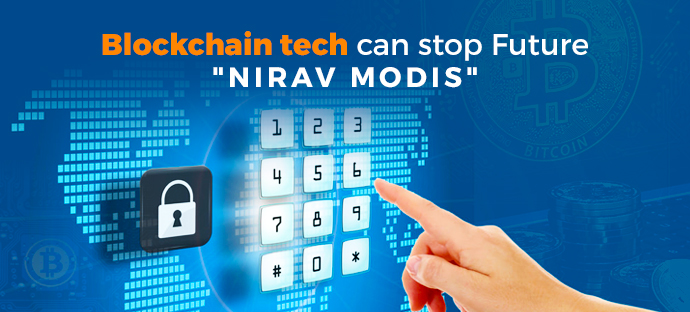There are two absolutely polar opinions on the blockchain. The first is that blockchain will significantly save the resources for banks and it’s a panacea for all sorts of cyber threats. The second, absolutely opposite one is that this technology is just one of the possible solution and in general quite doubtful.
Nevertheless, not long ago the life proved, who was right and who was wrong. According to the analysts, if the blockchain would have been used to conduct transaction in the Punjab National Bank, it could save both the money of the investors and the reputation of the bank.
Bitter lesson for banking system
Let’s dive a little bit in the numbers. According to the research conducted by RBI the governmental banks have opened 8,670 loan frauds that cost them approximately Rs 61,260 crore. Wow, that’s actually a lot.
Well the latest crisis faced by PNB clearly shows the banking system needs fast and effective changes, in order not to make the same mistakes again and again. Just imagine the employees were managing to bypass the transactions using fake letters and checks long 7 years without getting caught. Sooner or later the bank has to answer for that by paying back Rs 11,300 crore. It hurts.
Nirav Modi and his partner in crime Gokulnath Shetty with the support of the fake letter managed to bypass the lender’s system and place the instructions through international payment system SWIFT to seamlessly take crores and crores.
Obviously, what’s done is done, now the police will find the most appropriate steps to restore the justice. I want to talk about the possible technical solution for the banks to prevent this kind of fraudulent activity.
Also Read: 5 Reasons to Start Using Blockchain in 2018
Blockchain instruction manual
Blockchain is a chain of blocks, yes, as simple as that. Nevertheless, it’s not just a chain. It adheres to a strict sequence, which isn’t possible to change.
What are these blocks and what is the chain? Blocks are data about transfers, transactions and contracts within the system, presented in a cryptographic form. All blocks are lined up and securely connected. To record a new block, you need to consistently read information about the old ones.
All the data in the blockchain is constantly updating database. From this database, nothing can be removed or replaced. The space is “limitless”, so there can be recorded an infinite number of transactions.
The key features of Blockchain:
Decentralization – there is no server in the chain. Every participant is a server. He supports the work of the whole detachment;
Transparency – information about transactions, contracts, and so on is kept publicly available. However, these data cannot be changed;
Theoretical unboundedness – theoretically the block can be supplemented with entries to infinity. Therefore, it is often compared to a supercomputer;
Reliability – to conserve new data requires consensus of the nodes of the block. This allows you to filter operations and record only legitimate transactions.
To my mind, sounds quite impressive so far. Nevertheless, I would like to point out the use of this emerging technology for the banking system.
Present and future of blockchain in banking
After few disasters occurred in the banking sphere, many market players gave a second thought. Few Indian Banks (ICICI, SBI and South Indian Bank) have already started testing the new system based on blockchain. According to the leading financial analysts, the technology will help to improve the tracking system, which in the end will make the transactions safer.
In the Global Financial Market we can see the similar situation. SWIFT is promising to start the deployment of the payment system based on blockchain in 2018. Personally I’m quite curious to see the results.
Blockchain brings Safer World
The banks have a new prospect of moving the main operational and financial systems, as well as risk assessment systems, to a new platform for collective work with data based on blockchain.
The distributed nature of the blockchain databases makes hacking almost impossible. Only if the hackers will simultaneously access the copies of the database on all computers on the network, they can succeed. Frankly, sounds too fantastic to happen.
This will allow them to seriously simplify the processes, abandoning a large number of existing processes and elements of the information infrastructure.
Would you like to know about blockchain implementation across different sectors? Drop us a message on sales@wedigtech.com and our specialist will answer all your questions absolutely free of cost. Start changing your business now.










